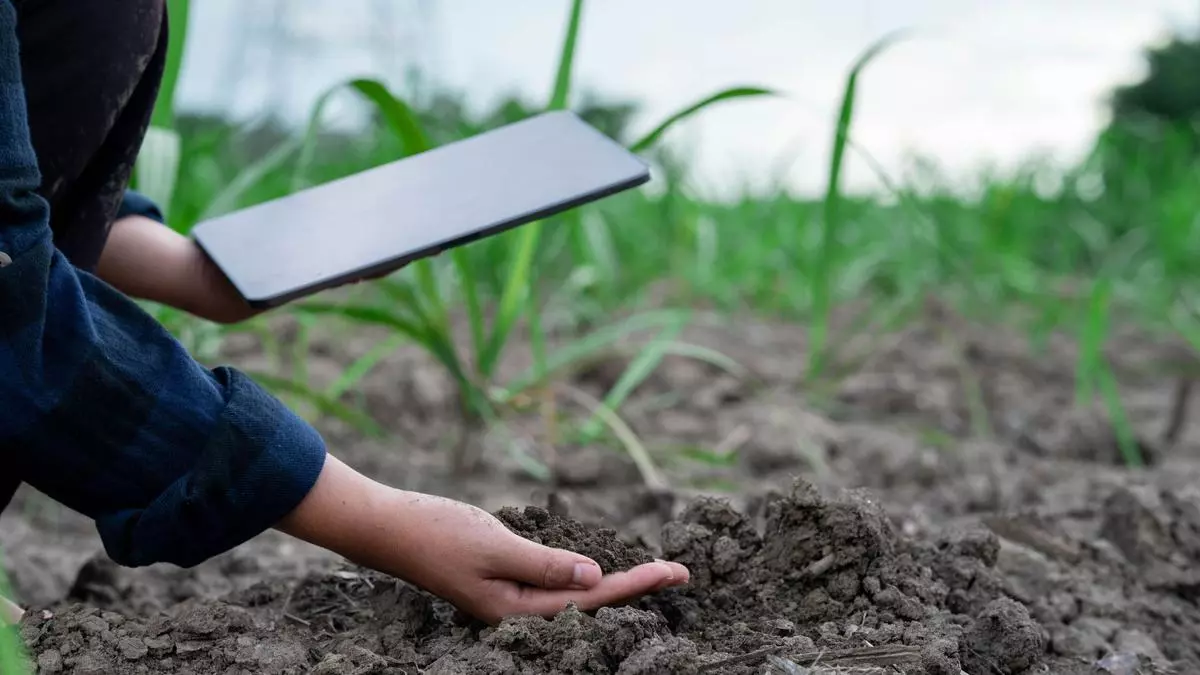Breaking barriers: How AI can revolutionise agriculture in India despite data dilemmas and digital divide
Agriculture was and is a high-priority sector of the Indian economy defining the livelihoods of 58 per cent of the country’s population. It also contributes 11.9 per cent of the gross value added (GVA) in global agriculture ($3,320.4 billion), second only to China. However, farming entails a great deal of choices and uncertainties.
From season to season, the weather varies, the prices of farming materials fluctuate, soil degrades, weeds and pests grow, and the climate changes. These constant fluctuations necessitate constant prediction and adaptation. Artificial Intelligence (AI) emerges as a powerful solution. This technology will be a tool for farmers to detect crop anomalies , predict the weather, analyse soil quality, and provide required solutions.
According to MarketsandMarkets, AI in agriculture is expected to reach $4.7 billion by 2028 from $1.7 billion in 2023. India’s use is projected to grow at a compound annual growth rate (CAGR) of 23.1 per cent from 2023 to 2028.
Partnerships in strategic sectors
Global Technology giants are steadfastly partnering with governments to provide AI solutions in strategic sectors like agriculture. On 8 February 2024, Google signed an MoU with the government of Maharashtra to assist in developing AI tools. The World Economic Forum has collaborated with the Governments of Telangana, Uttar Pradesh, and Maharashtra to promote and assist in AI innovations in agriculture.
The Union government has also launched AI programmes assisting agriculture and Kisan e-Mitra, an AI-powered chatbot that assists people regarding the PM Kisan Samman Nidhi scheme. National Pest Surveillance System uses AI to detect crop issues, enabling timely intervention for healthier crops. In addition to the State governments, a recent tripartite agreement was signed between the National Farmers’ Welfare Programme Implementation Society (NFWPIS), IndiaAI under Digital India Corporation, and the Wadhwani Foundation to leverage AI in agriculture. These developments signify a collaborative effort to advance AI adoption in the country, especially agriculture.
Equipping ecosystem
India is actively taking steps to integrate it into agriculture while facing its unique challenges in adoption. Realising the AI potential requires the establishment of an AI-ready ecosystem equipped with ethical frameworks, robust data-sharing mechanisms, and effective risk management protocols. One crucial aspect is the definition and delineation of farmer-generated data, encompassing both personal and non-personal information. Data on soil, crop patterns, and yields may be shared with third parties for market analysis, brand preference insights, regional affiliations, and sensitivity to government subsidies. There is a probability that Agritech companies may use the data retrieved from the users of the AI tools to upsell products, tie their use of AI to their seed and machinery supplies, or use these data to buy up their land for very low prices. Striking a balance between the farmer’s ownership rights and the collaborative nature of data sharing is crucial for fostering trust and cooperation within the sector.
Currently, there is a lack of a centralized repository for agricultural data, posing challenges for startups and organizations developing AI solutions. The recently initiated Agri Stack by the Indian government aims to address this gap by providing a platform with comprehensive agricultural data sets, including farmer details, crop information, geographical data, and market trends. Even to implement the Agri stack in all the states, relevant data-sharing policies and standards are to be prescribed by the government.
The other challenges after enabling the relevant data policies are related to AI development and deployment. AI development in the agriculture sector should be done with inclusive datasets. If the prediction of weather, crop price, or the advisory provided to the farmer is based on non-inclusive data, then the assistance provided by the AI tools will be biased. Several other risks include data theft, Denial of Service, and data fabrication.
Security by design
Overcoming these challenges necessitates a multifaceted approach encompassing policy enablers like Public-Private Partnership (PPP) frameworks and outcome-based procurement policies, alongside technological enablers such as sandboxes and data exchanges. Addressing infrastructure gaps, particularly in remote and underserved regions, is critical for democratising access to AI technologies and fostering inclusive growth. Moreover, ensuring security by design principles and establishing robust institutional structures for governance are imperative for instilling trust and confidence in AI-driven agricultural systems.
In conclusion, while the potential of AI in transforming Indian agriculture is immense, realising this vision requires concerted efforts to tackle the multifaceted challenges at hand. By facilitating collaboration among stakeholders, embracing innovation, and implementing forward-thinking policies, India can unlock the full potential of AI to drive sustainable growth and prosperity in its agriculture sector.
The author is Technology Policy Analyst, Wadhwani Government Digital Transformation (WGDT)
